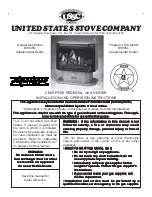
Lync AEGIS
11: REFRIGERANT
L-OMM-012_A
•
4/20/2022
Technical Support • (800) 433-5654 • Mon-Fri, 8 am - 5 pm EST
32
of
37
First Aid
Ingestion:
Ingestion is not considered a potential route of exposure.
4.2.
Most important
symptoms & effects, both
acute & delayed
In high concentrations may cause asphyxiation. Symptoms may include loss of
mobility/consciousness. Victim may not be aware of asphyxiation. Low
concentrations of CO2 cause increased respiration and headache.
4.3.
Indication of any
immediate medical
attention and special
treatment needed
None.
V. Fire Fighting Measures
5.1.
Extinguishing media
Suitable extinguishing
media
All known extinguishants can be used.
5.2.
Special hazards arising
from the substance or
mixture
Specific hazards
Exposure to fire may cause containers to
rupture/explode.
Hazardous combustion
products
None.
5.3.
Advice for fire-fighters
Specific methods
If possible, stop flow of product. Move container away
or cool with water from a
protected position.
Special protective
equipment
for fire-fighters
In confined space use self-contained
breathing apparatus.
VI. Accidental Release Measures
6.1.
Personal precautions,
protective equipment and
emergency procedures
Evacuate area
.
Wear self-contained breathing apparatus when
entering area unless atmosphere is proved to be safe
.
Ensure
adequate air ventilation
.
Prevent from entering sewers, basements
and workpits, or any place where its accumulation can be
dangerous.
6.2.
Environmental
precautions
Try to stop release
.
6.3.
Methods and material for
containment and cleaning up
Ventilate area
.
6.4.
Reference to other
sections
See also sections 8 and 13
.






































